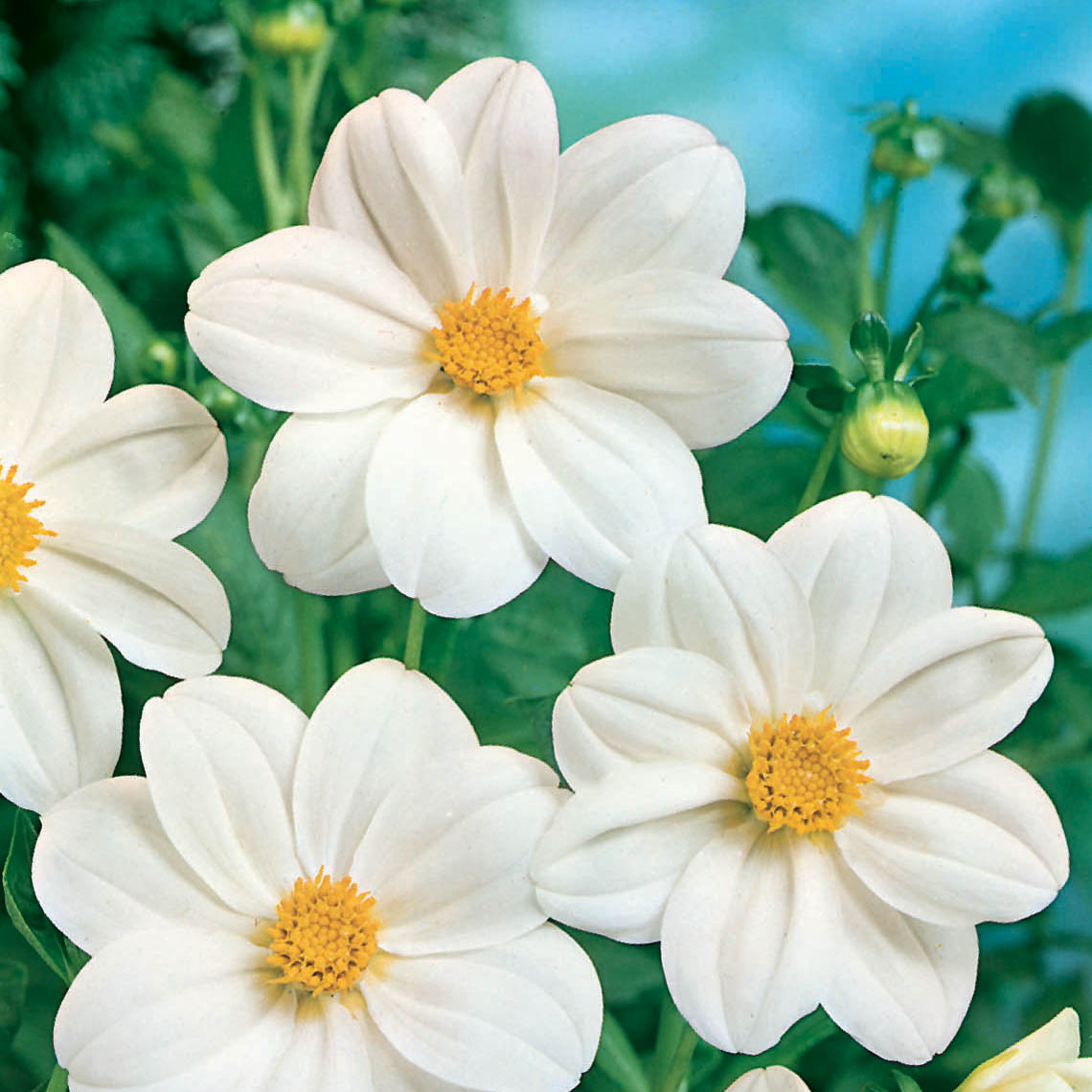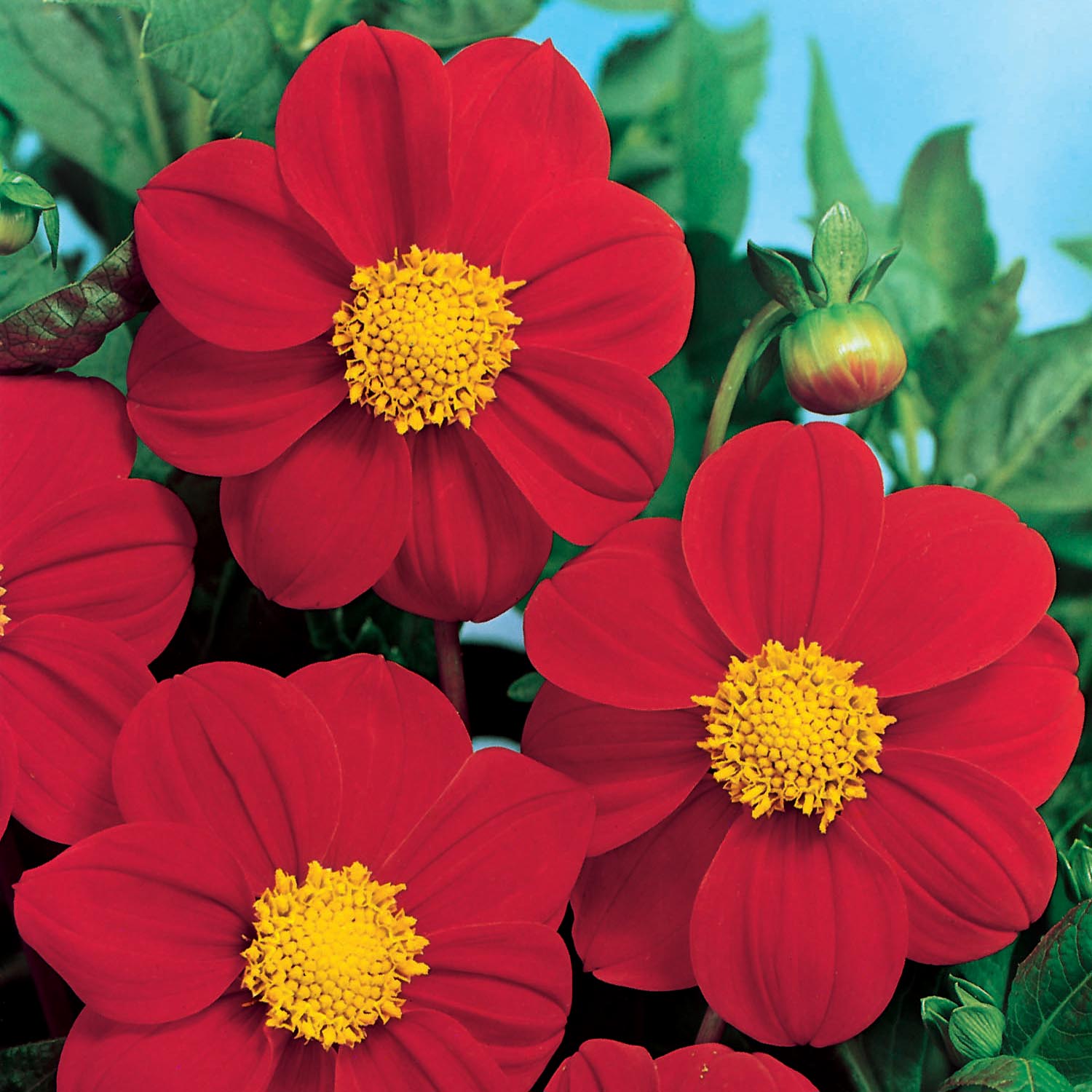Mignon Series dahlias produce nectar and pollen rich single petalled flowers on short plants. We designed a simple trial to determine which bumblebee species visit the blooms, whether they demonstrate a colour preference and to explore the potential of Mignon Series dahlias as insect-friendly bedding plants.



In spring 2017, packets of seed were sent to citizen scientists around the UK, who were asked to grow three white, three red and three purple flowered plants. Once the plants were in flower, participants were asked to use our app to carry out timed observations and photograph any bumblebees foraging on the blooms. Between June and September, 192 participants submitted a total of 854 surveys, which included photographs of 1,050 individual bumblebees. 10 species of bumblebee were recorded visiting the dahlias, the vast majority of which (89%) were either Buff-tailed Bumblebees (Bombus terrestris), White-tailed Bumblebees (Bombus lucorum) or Common Carder Bees (Bombus pascuorum).

As summer progressed, the plants of all colour forms bore more flowers. Though there were more white blooms per plant, the difference between these and the other colour forms was not great enough to be statistically significant. There were also slightly more bumblebee visits per flower to the white blooms, but again, this was not at a statistically significant level.


Nectar and pollen
In addition to our participants around the country, we grew ten pots of each dahlia colour form at Ryton Organic Gardens near Coventry. We measured the quantity of pollen, and quantity and sugar concentration of nectar from a total of 72 flowers. These measurements varied hugely between individual flowers and whilst the white blooms had on average more pollen grains and more concentrate nectar, this was due to a few individual flowers with unusually high values, so cannot be considered statistically significant.

What participants thought
We invited participants to complete a questionnaire about their experience of the trial and have so far received 94 responses. The majority of people thought that the Mignon Series dahlias were well visited by bumblebees compared to other bedding plants, with 56% saying they would grow them again, and 60% that they would recommend them as a bedding plant.
43% of respondents thought that certain colours were more visited by bumblebees (while 23% did not think they were, and 33% were not sure). When asked which colour they thought was most visited, these participants said white or red, with each receiving 42% of the votes.
If you took part in our dahlia trial and have not yet completed the questionnaire, then you can do so here.



Conclusions
All colours were well visited, but from our analysis so far, we are not able to conclude whether bumblebees have a prefered colour of ‘Mignon Series’ dahlia (though previous studies of other flower species have found differences). Many participants reported that fewer bumblebees foraged on the dahlias when other attractive flowers were in bloom nearby. This was particularly noted in the presence of lavender (Lavandula species) and cosmos (Cosmos species) but would require further study.
We think that the bright colours, dwarfing habit and long flowering period of Mignon Series dahlias makes them suitable for growing as bedding plants. Unlike many plant species used in traditional bedding displays such as pelargoniums and begonias, single flowered dahlias are a good source of nectar and pollen for insects.

Some participants found that bumblebees preferred other flowers over dahlias

Long-tongued Garden Bumblebees prefer to forage on deep, tubular flowers

Simple dahlias (without ‘double’ petals) are a source of pollen and nectar well into autumn
A wide variety of bumblebees visited the dahlias. These were predominately short-tongued species such as Buff-tailed and White-tailed Bumblebees (Bombus terrestris and lucorum) and the Common Carder Bee (Bombus pascuorum) which has a slightly longer tongue, but is known to forage on a very broad range of flowers. There were only three visits by the very long-tongued Garden Bumblebee (Bombus hortorum), presumably because they prefer flowers with much deeper nectaries and would find it physically difficult to feed on dahlias. Despite its short tongue, only four Early Bumblebees (Bombus pratorum) were recorded, likely due to the fact that this species is active earlier in the summer, whilst dahlias are late-summer blooms.
Like many species of exotic origin, dahlias continue to flower right into the autumn; significantly later than a lot of other garden and native plants. As such, they have the potential to be a valuable food source for insects like queen bumblebees about to enter hibernation. Following some rather erratic growing seasons and amidst the challenges of climate change, the availability of flowers later in the year could be increasingly important.
What next?
In addition to the Mignon Series dahlias used in this trial, our app users have submitted records of bumblebees visiting a wide range of other garden plants this summer. This includes other varieties of dahlia, so it will be interesting to examine how visitation rates to Mignon Series and other dahlia varieties compare.

As part of our trial at Ryton Organic Gardens we also recorded the duration of bumblebee visits. Our initial data analysis suggests that bumblebees spent significantly longer foraging on the white plants, probably because on average, they had a greater number of open flowers. We will be carrying out further analysis to explore this.
Thank you to everyone who took part in our dahlia trial and also those who used our app to record bumblebees foraging on other flowers this year. There is still lots of analysis to be done of the other plant species and we will be continuing to collect records in 2018. We hope you have enjoyed growing the dahlias and observing their insect visitors. If you wish to keep your dahlias in their dormant state over winter ready to grow again next year, The RHS offers advice on this.
Join the conversation on social media using #DahliaBlooms and follow trial updates on our blog.

